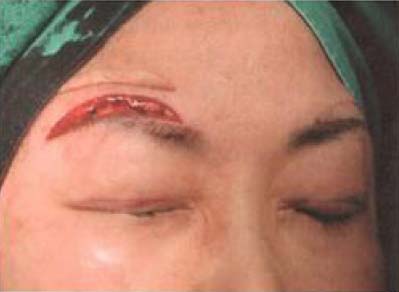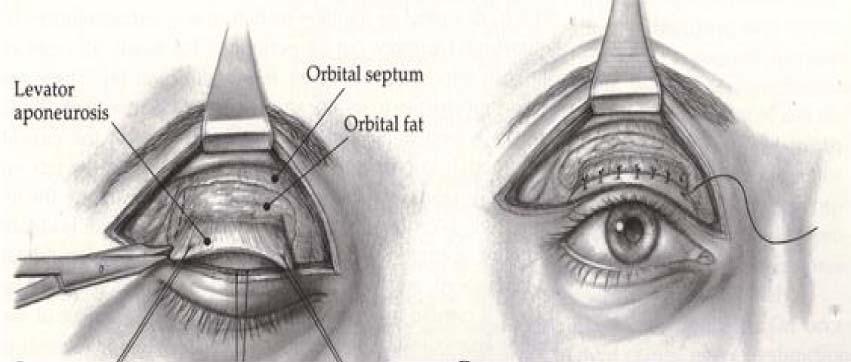Korean Lepr Bull.
2019 Dec;52(1):23-27. 10.33161/klb.2019.52.1.23.
Easy method for Upper lid blepharoplasty in elderly Hansen affected persons
- Affiliations
-
- 1Ahn's Plastic and Aesthetic surgery Clinic, Korea. pscliahn@hotmail.com
- 2Department of Dermatology, Gachon University Gil Medical center, Korea.
- 3Institute for Leprosy Research, Korean Hansen Welfare Association, Korea.
- KMID: 2466489
- DOI: http://doi.org/10.33161/klb.2019.52.1.23
Abstract
- BACKGROUND
The average age of Korean Hansen affected persons who have become less than 10,000 is 76 years old. The upper eyelid lesions of these patients coexist with senile lesions and paralytic lesions due to facial paralysis. This senile change includes skin laxity, eyebrow drooping, eyelid drooping, medial and lateral canthal relaxation and paralytic changes include wrinkle disappearance in the forehead, eyebrows asymmetry, eyelash drooping in the upper eyelid, and simultaneously symptoms of lower eyelid such as ectropion and lapophthalmos.
OBJECTIVE
Authors want to present a prescribed method of treatment that makes it easier to fix changes in senile and paralytic eyelids in elderly Hanson affected persons.
METHODS
For senile blepharochalasis, if the distance between eye blow and eyelash (brow-lash distance) is to the 2.5 cm or more the sub-brow resection should be done. However, if brow-lash distance is less than 2.5 cm, the supra-brow resection should be done. For paralytic cases if there is a difference in height on the eyebrow. the skin is removed to create the same level as the eyebrow height on the healthy side. if both eyes are paralyzed the supra blow skin excision are done with prudence not to make the lagophthalmos. RESULT: In recent 2 years of 2018-2019 we treated 32 cases of blepharochalasis, Blephnaroptosis, paralylic eyebrow droping and lash-laden eyelid margin excision for trichiasis correction. Satisfactory results were obtained in all patients who underwent surgery.
CONCLUSION
The authors report our experience of treating various upper eyelid lesions in the past 2 years in 32 cases of Hansen affected persons a history of Hansen's disease, together with literature review.
MeSH Terms
Figure
Reference
-
1. Ahn SY. Upper eyelid blepharoplasty in Aged person. J Korean Soc Aesthetic Plast Surg. 2010; 16:64–71.2. Ahn SY, Park HJ, KIim JP. Aesthetic surgical Treatment of the Periorbital area in Hansen's Patient. Korean Lepr Bull. 2017; 50:3–17.3. Ahn SY. Upper eyelid blephaloplasy in Aged person. Berlin: Lambert Acad Pub;2017.4. Kanter WR, Wolfort FG. Ptosis and other special cases in cosmetic Blepharoplasty. In : Wolfort FG, Kanter WR, editors. Aesthetic Blepharoplasty. Copenhagen: Library of Congreas;1995. p. 143–165.5. Ahn SY, Kim JP, Park HJ. Lid splitting with lash Resection for trichiasis in long-standing leprosy. Korean Lepr Bull. 2015; 48:31–36.
- Full Text Links
- Actions
-
Cited
- CITED
-
- Close
- Share
- Similar articles
-
- Easy Method to Determine Skin Excision Amount in Upper Blepharoplasty
- The Change of Eyebrow Position After Upper Lid Blepharoplasty in Patients With Dermatochalasis
- Status of Hepatitis C in Hansen's Disease
- Upper Eyelid Blepharoplasty in Aged Persons
- Status of Hepatitis C of Hansen's Disease of Jeonbuk Province





